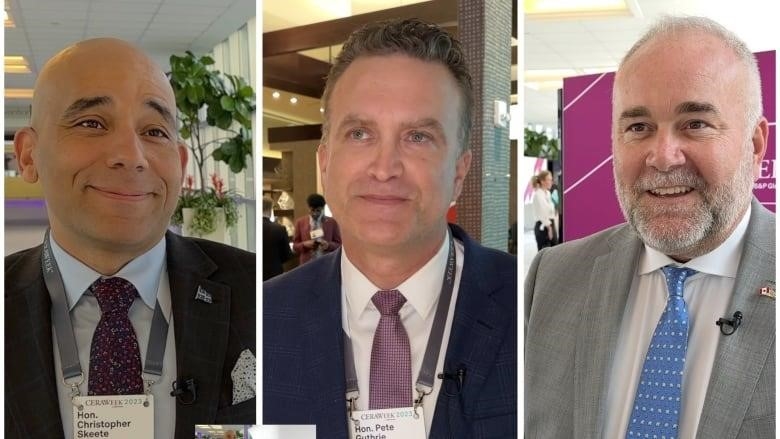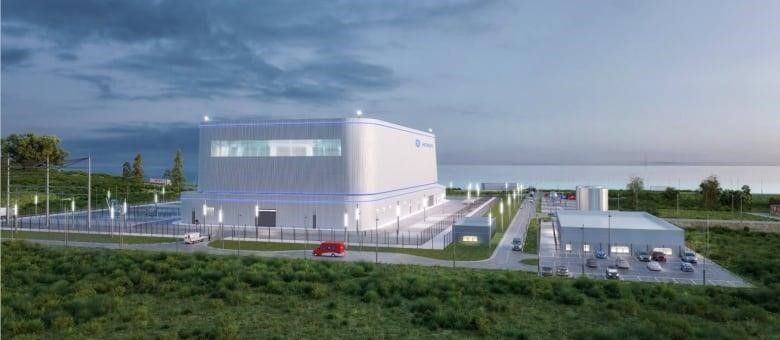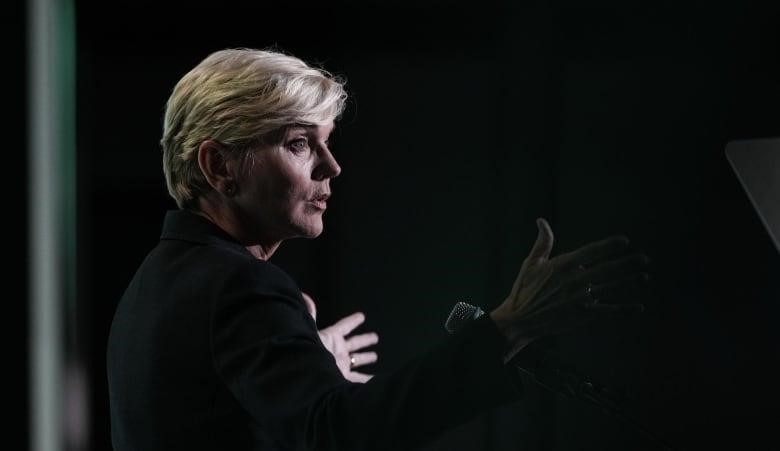
Each province has a different energy priority on the world stage, such as lithium and nuclear power
This week, three energy ministers from Canadian provinces are in Texas to try to get more attention on the world stage and attract investment to help their home industries grow.
The ministers may have the same goal in mind, but they are focusing on very different types of energy during their time at CERAWeek, a global conference on energy.
This is the first time that Quebec has been at the summit.
Quebec’s Associate Minister for Economy and Energy, Christopher Skeete, said, “We’re looking for investments, we’re looking for partners, and we’re here to show people that Quebec is open for business.” “We want to see projects that will help us move the needle on climate change and also help Quebecers make a little money.”
The province is known for producing a lot of hydroelectric power, but Skeete is in Houston to show how Quebec could be a source of important minerals.
“We have a lot of nickel and a lot of lithium,” Skeete told CBC News on the sidelines of the event. “Huge things could happen. There are a lot of chances. And we have to be here because we should.”
More than 7,500 political leaders, business executives, and other people from about 80 countries are at an event in Houston this week.
“A lot is going on in the energy world,” said Todd Smith, the energy minister of Ontario.
“Ontario is the leader in North America and the rest of the world when it comes to small modular reactors. It was a great chance to show off the technology we have.”
The Canada Infrastructure Bank, a federal Crown corporation, made a deal with Ontario Power Generation last fall to give them almost $1 billion to build the first small modular reactor in the country.

Alberta, on the other hand, is focusing its attention on its traditional oil and natural gas industries as well as its clean tech industry. The conference is also being paid for by the province.
Alberta’s energy minister, Peter Guthrie, said, “The discussion goes from oil and gas to transitional renewables, carbon capture, and hydrogen, so it’s all over the place.”
Several new carbon capture and storage projects are being planned in Alberta right now to help cut down on the pollution from industry that goes into the air and contributes to climate change.
Kevin Birn, a vice president at S&P Global Commodity Insights, said that there is a unique Canadian story to be told.
“Canada has a lot of different kinds of energy, from hydropower to critical minerals infrastructure to oil and gas, and each region has its own mix. It is important to tell that story so that people can understand it and want to invest in Canada,” “he said.

The energy ministers from the three provinces say they are working together to show that Canada is a safe and trustworthy place to do business.
Still, they are competing for investment dollars with each other and with places all over the world.
After passing the Inflation Reduction Act, which includes subsidies and other financial incentives worth tens of billions of dollars to help develop low-carbon energy sources, the United States is getting a lot of attention.
“When you look at everything, you can see that the Biden-Harris administration has made the United States the best place to invest in new energy and technologies that reduce carbon emissions. It makes the United States irresistible in many, if not most, situations. “Wednesday, the U.S. Secretary of Energy, Jennifer Granholm, spoke to the crowd.
This year, there is no political representative from the federal government. Since the natural resources minister usually speaks, this is a big deal. Prime Minister Justin Trudeau gave a keynote speech in 2017.
